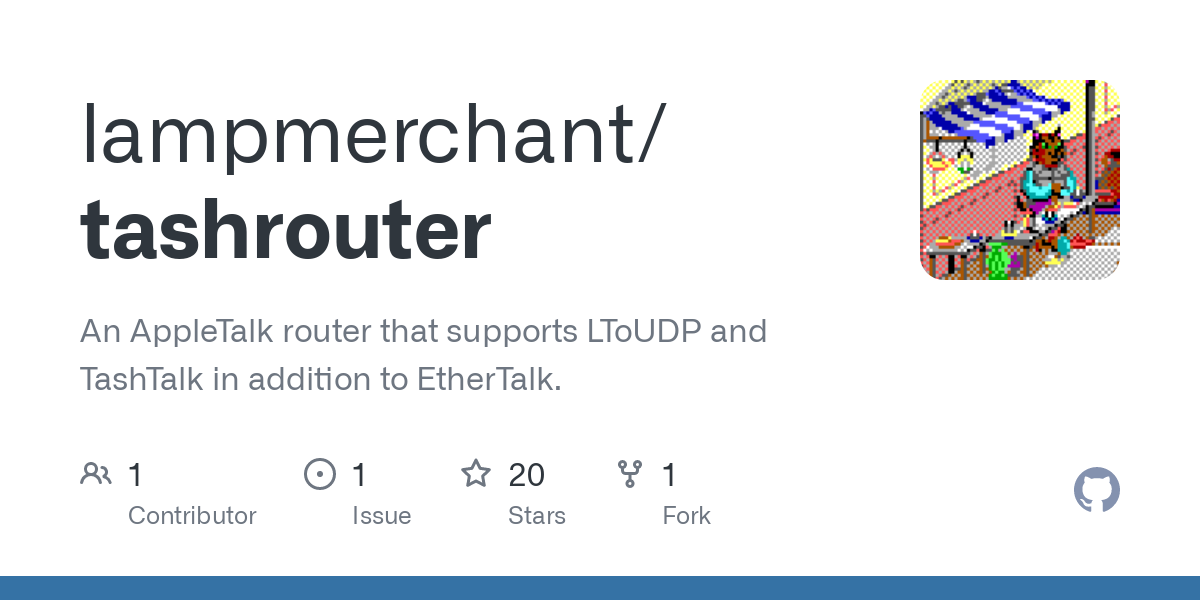Tashtari
PIC Whisperer
For those of us not lucky enough to own a Shiva...
Introducing... TashRouter!
Elevator Pitch
It's an AppleTalk router written in Python that runs on modern hardware and supports LocalTalk (via TashTalk), LToUDP, and EtherTalk.
Project Status
Minimally functional. Currently, on a network where it is the only router, it has been tested to be able to pass data between a TashTalk network and an LToUDP network. Support for other routers on an internet is implemented but not tested.
Caveats
Currently I only expect this to fill the use case of an internet (an internet, not the internet) router for AppleTalk, not the "half router" or "backbone network" cases detailed in Inside AppleTalk, but it's possible that may change. Other than that and the fact that it's not done yet, nothing, really.
What's Next
A port driver for EtherTalk is high on the list of plans, as is testing, testing, testing - I've been very much in move-fast-and-break-things mode, trying to build my somewhat anemic knowledge of networking as I go. If I'm successful, it's my intention that this becomes part of a larger effort to liberate us from boondoggles like Netatalk 2.x and the rotting AppleTalk code in the Linux kernel.
Code

 github.com
github.com
Special thanks to @cheesestraws for advice and encouragement. I'd love for any adventurous types out there to give this a try in its current state and/or give the code a look - suggestions and comments are welcome.
Introducing... TashRouter!
Elevator Pitch
It's an AppleTalk router written in Python that runs on modern hardware and supports LocalTalk (via TashTalk), LToUDP, and EtherTalk.
Project Status
Minimally functional. Currently, on a network where it is the only router, it has been tested to be able to pass data between a TashTalk network and an LToUDP network. Support for other routers on an internet is implemented but not tested.
Caveats
Currently I only expect this to fill the use case of an internet (an internet, not the internet) router for AppleTalk, not the "half router" or "backbone network" cases detailed in Inside AppleTalk, but it's possible that may change. Other than that and the fact that it's not done yet, nothing, really.
What's Next
A port driver for EtherTalk is high on the list of plans, as is testing, testing, testing - I've been very much in move-fast-and-break-things mode, trying to build my somewhat anemic knowledge of networking as I go. If I'm successful, it's my intention that this becomes part of a larger effort to liberate us from boondoggles like Netatalk 2.x and the rotting AppleTalk code in the Linux kernel.
Code
GitHub - lampmerchant/tashrouter: An AppleTalk router that supports LToUDP and TashTalk.
An AppleTalk router that supports LToUDP and TashTalk. - GitHub - lampmerchant/tashrouter: An AppleTalk router that supports LToUDP and TashTalk.
Special thanks to @cheesestraws for advice and encouragement. I'd love for any adventurous types out there to give this a try in its current state and/or give the code a look - suggestions and comments are welcome.
